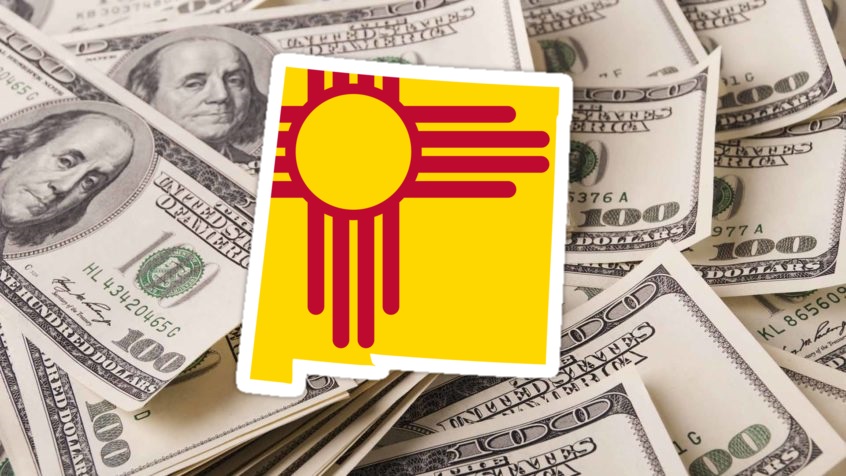Jennifer Faubion, economist with the Legislative Finance Committee said oil and gas brought in $6.6 billion to the State in taxes, and another $8.6 billion from land income in Fiscal Year 2023.
She said the influx in revenue was driven by increased oil and gas production in the southeast Permian Basin.
Faubion said in the last five years, since FY 2018, oil and gas revenues quadrupled. The General Fund more than doubled in the last two years, she said, benefitting several statewide programs and services like education and infrastructure. Faubion said the General Fund, used to develop New Mexico’s budget was 35 percent reliant on oil and gas in FY 2023.
“It’s been exceeding our expectations for a number of years,” Faubion said of oil and gas revenue during the June 11 meeting at the Pecos River Village Conference Center. “And it just keeps growing.”
But the reliance would soon trend downward, she said, as the state invests the oil money, considered non-recurring revenue and viewed as volatile and dependent on commodity markets worldwide, moving it out of the General Fund and into funds that could appreciate over time. Oil money was also ideal for spending on one-time projects like roads or water systems, she said, addressing needs in local communities.
The LFC’s forecast showed a near-term increase in General Fund’s oil and gas reliance from 35 percent in FY 2023 to almost 40 percent in FY 2024, but then gradually declining back to about 35 percent in FY 2028. Faubion said this projected decrease was attributable to legislative spending and investment of the “windfall” income brought in an ongoing upswing in production.
“We can start to compare long-term impacts of putting dollars away, especially when our reserve levels are so high and our new money levels are so high,” Faubion said. “You can do a little of both.”
Rep. Gail Armstrong (R-49) asked Faubion during the meeting how proposed statewide oil and gas setbacks, defining the required distance between oil and gas facilities and sensitive areas like homes or schools, would impact revenue from the industry.
Faubion said the Legislative Finance Committee was unsure the exact dollar amount that would be affected, but said preliminary research showed about 10 percent of New Mexico’s oil and gas wells would be impacted if the setback proposal took effect.
“Oil production will come down naturally over time,” Armstrong said. “If we push it down before we’ve diversified our economy, how are we going to pay for things like schools and roads?”
Carlsbad Mayor Rick Lopez said oil and gas revenue was necessary to support growth in his community and statewide. He said the work done in the southeast corner of the state to extract fossil fuels must be supported by lawmakers in the “long-term.”
“As everyone knows the oil and gas processes in the southeast are vital to the state’s finances. This industry has not only fueled our homes and businesses but played a vital role in building our communities,” Lopez said. “Our oil and gas partners in the area have been great to work with. I want to highlight the importance of long-term oil and gas production.”
Lopez admitted that the influx of the oil and gas industry, and its workers flocking into communities in the southeast like Carlsbad and Hobbs, led to concerns like higher housing prices and more traffic. He said the industry was working closely with local leaders to address the impacts of its growth.
“We understand oil and gas has brought hardships to our communities. But rest assured, the oil and gas companies remain transparent and diligent partners in addressing these concerns,” Lopez said. “We must avoid overregulating this sector.”
Chair of the Eddy County Board of Commissioners Bo Bowen pointed to contributions by the industry to the county’s infrastructure like roads. He said Eddy County was able to invest about $150 million into its roads recently, which was made possible, Bowen said, by the fossil fuel industry’s growth.
“These are projects we’ve been able to fund ourselves due to conservative fiscal responsibility and oil and gas,” Bowen said. “It’s safe to say industry is here in New Mexico and it’s thriving. For the last couple of decades, oil and gas has been the backbone of our economy.”
Demand for oil and gas could peak by 2033, according to a report last year presented to the Legislative Finance Committee during a July 2023 meeting. Despite this prediction that demand for fossil fuels, thus oil and gas prices and production, could begin to decline within the decade, Bowen said he was confident the industry would continue its strong support of southeast New Mexico and the entire state.
“We’re sitting in the Delaware Basin which has one of the largest oil deposits in the world. Oil is not going anywhere,” he said. “We’re thankful for the booming economy we have, and proud to be one of the biggest supporters of the state economy.”


